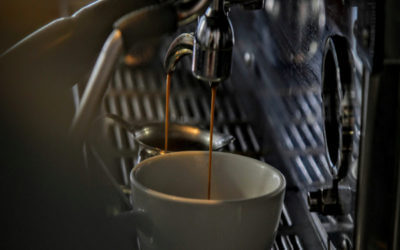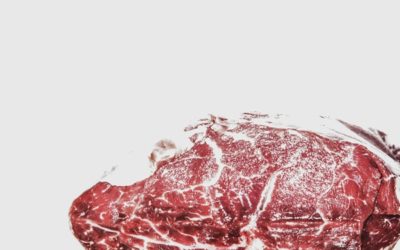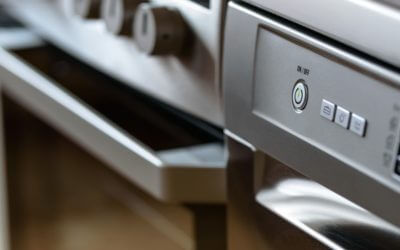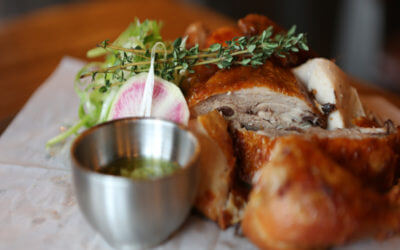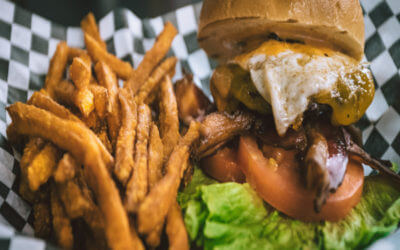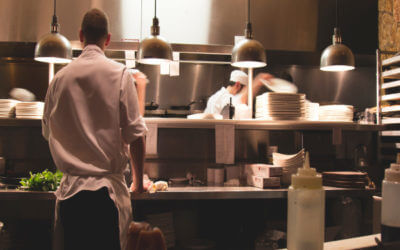4 Keys to Successful Commercial Kitchen Design
February 21, 2019If you’re opening a new restaurant or renovating your existing kitchen, you probably already have some ideas about how it should look.
However, it’s important to look beyond your own ideas and understand the keys to good design in general. This will help you incorporate your thoughts into a commercial kitchen that flows well and makes sense for staff.
You’ll be amazed how much a good kitchen layout can impact morale. Here’s what you need to know to set yours up successfully.
Consider the Flow of Food
The first step is to take a close look at your menu and think about how the food you prepare flows in the kitchen.
Do you have a lot of orders for appetizers that go out before the main meal? How many desserts do you offer and how popular are they? What is the demand like for soups and salads?
Knowing your own menu deeply and consulting with your cooks or chef will help you understand where bottlenecks are so you can design a better commercial kitchen.
Think About Ergonomics
You might think ergonomics is primarily about office workers using computers, but it applies in your commercial kitchen as well. Ergonomics is defined as “an applied science concerned with designing and arranging things people use so that the people and things interact most efficiently and safely.”
As you design your kitchen, consider how the people in your kitchen can move most efficiently. What kind of walking space does there need to be between stations? What can you do to make it easier to get around people who are working?
Safety is the next thing to consider. Don’t overlook restaurant equipment like padded standing mats, non-slip floor coverings, and more.
Plan for Equipment Storage
Food storage is a vital part of any commercial kitchen. We’ll talk about that in a minute! But don’t overlook easy-to-use equipment storage.
Too often equipment storage looks nice – until it’s dinner rush and there’s no time to get everything organized and things get stacked wherever they fit.
That quickly becomes a mess and bowls, utensils, and more become almost impossible to find. Employees use the wrong knife, the wrong sized bowl, and make other mistakes because they can’t put their hands on the right pieces.
Don’t let this happen in your kitchen! Plan your equipment storage as if dinner rush is constant. Your staff will thank you for it.
Get the Right Food Storage in Your Commercial Kitchen
Finally, think about how to place food storage strategically in your commercial kitchen. Your options may be limited when it comes to where your refrigeration, freezers, and other equipment will be.
However, how you organize within those units is completely under your control. Consider looking into pull-out shelving that allows employees to reach things in the back easier so that items don’t get lost. Also, think about how to easily incorporate inventory controls either digitally or manually.
We’ve been helping Little Rock restaurants get the equipment they need for new kitchens, renovations, and much more. We’d love to serve you as well. Contact us for a quote today!
5 Things Every Restaurant Owner Should Do Before Buying Used Kitchen Equipment
Equipping your restaurant properly can cost a lot of money, so buying used kitchen equipment is the go-to choice for many restaurateurs. Buying used kitchen equipment for a restaurant is a bit different than buying used equipment for your home, however. You will...
Top Restaurant Technology Trends in 2018
When looking to buy restaurant supplies, you want to be on the leading edge of technology trends. This will keep your kitchen running smoothly. Let’s take a look at some of the most recent trends in restaurant supplies technology. 1. New Payment Options Who would...
5 Different Ice Shapes and Why You Should Care About Them
Ice makers are very popular in the restaurant and foodservice community because they eliminate the need to buy ice every day. And of course, adding an ice maker to your collection of foodservice equipment means you will always have ice on hand when you need it. An...
Pulping and Grinding: A Starter’s Guide to Reducing Commercial Food Waste Costs
For most restaurant owners and managers, the expenses involved in making meals are always under careful consideration. Water is needed to prepare, cook and wash food; power is necessary for food prep, cooking and cooling, and so on. However, how many of us consider...
Choosing the Right Milk Cooler: Cold Wall or Forced Air?
In a restaurant, milk is an essential to have on hand for coffee and other café-style beverages, for serving with kids’ meals, and as a key ingredient in many recipes. Keeping your milk properly chilled can be difficult without the proper restaurant equipment....
How to Choose Your Next Commercial Meat Smoker
The movies that connect with us on a personal level are the ones that linger in our memories forever. Anyone who has used a commercial meat smoker knows that they have a huge influence on the taste of a meal. You need to have just the right kitchen equipment to get a...
Are High Speed Ovens Too Good to be True?
You might have heard a few of the bold claims that foodservice equipment manufacturers have been making about high speed ovens, but they can’t be possible, right? Cooking three times as faster as regular ovens? Five times as fast? Fifteen times as fast? It may seem...
Choosing the Right Food Storage Containers for Your Restaurant
Choosing the right kitchen supplies will make a difference in your restaurant. Whether it is heavy duty kitchen equipment or food storage containers, each piece of equipment plays its own important role. Today, we are going to talk about how to choose the right food...
Tipton’s Guide to Perfect Poultry Trussing
Do you ever truss birds in your commercial kitchen? Trussing is a fantastic cooking technique because it makes poultry cook faster, look more attractive and taste better. If your commercial kitchen prepares poultry, you don’t want to miss these trussing tips. Trussing...
How to Eliminate Excess Condensation in Your Kitchen
Is your commercial kitchen getting steamy? If so, you could have more than just an uncomfortable working environment on your hands. Excess moisture in your commercial kitchen can result in the corrosion of equipment, the development of mold, and even damage to your...
The DIY Guide to Your Restaurant’s Own Garden
Stocking your restaurant supply with your own home-grown herbs and produce can truly bring your dishes to life. When it comes to food, everyone knows there’s nothing like homemade and home-grown. Having your own culinary garden, however large or small, can help you...
5 Reasons a Meat Grinder Will Set Your Burgers Apart
The more you do to prepare your foods in-house with the right kitchen equipment, the fresher and more flavorful your dishes become. There are all sorts of restaurants offering fast-food style burgers, but some diners are looking for the real deal. A fresh, juicy...
Pest Preventions to Implement in Your Commercial Kitchen
Restaurant pests: it’s something that few people want to think about. Like it or not, pest management is an essential consideration for every commercial kitchen. Offering food, shelter and water, the unprepared commercial kitchen naturally provides everything pests...
Choosing the Right Material for Your Cooking Equipment
Kitchens are very unique to their chef. Just like a car mechanic has a toolbox unique to them, so is the cooking equipment in a kitchen. And over time, the same cooking equipment become a natural extension of the chef. What tools are you using in your kitchen? It...
Kitchen Hacks for Your Home
Some people are naturally good at certain skills. We all know someone who is naturally book smart, athletic, or musically inclined. What makes you jealous of them is how easy they make tasks seem compared to you. One skill might be cooking. Your dream may not be...

